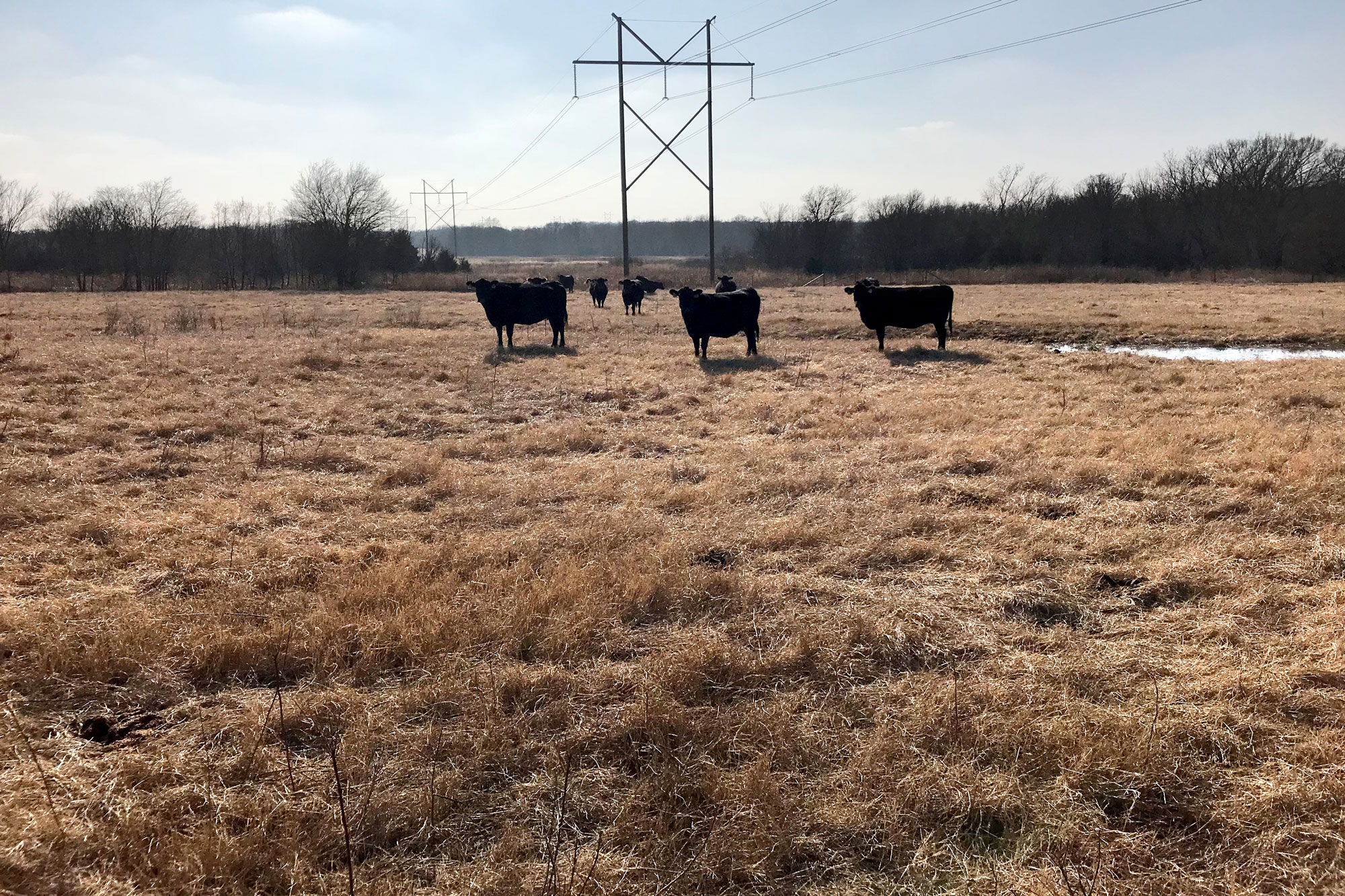
Agricultural News
Grazing Cattle Can Reduce Agriculture's Carbon Footprint
Sun, 15 Aug 2021 16:10:41 CDT
 Ruminant animals like cattle contribute to the maintenance of healthy soils and grasslands, and proper grazing management can reduce the industry's carbon emissions and overall footprint, according to Richard Teague, Ph.D., professor emeritus in the Department Rangeland, Wildlife and Fisheries Management and senior scientist of the Norman Borlaug Institute for International Agriculture and the Texas A&M AgriLife Research and Extension Center at Vernon. Teague's research showed appropriate grazing management practices in cattle production are among the solutions available to address concerns related to agriculture's impact on the environment. Teague said ruminant livestock are an important tool for achieving sustainable agriculture with appropriate grazing management.
Ruminant animals like cattle contribute to the maintenance of healthy soils and grasslands, and proper grazing management can reduce the industry's carbon emissions and overall footprint, according to Richard Teague, Ph.D., professor emeritus in the Department Rangeland, Wildlife and Fisheries Management and senior scientist of the Norman Borlaug Institute for International Agriculture and the Texas A&M AgriLife Research and Extension Center at Vernon. Teague's research showed appropriate grazing management practices in cattle production are among the solutions available to address concerns related to agriculture's impact on the environment. Teague said ruminant livestock are an important tool for achieving sustainable agriculture with appropriate grazing management.
"A key element is that grazing cattle on permanent perennial grasslands with appropriate management helps develop soil biology to improve soil carbon, rainfall infiltration and soil fertility. Thus, much more carbon dioxide equivalents are sequestered into the soil than are emitted by cattle in that management unit," Teague said.
According to the abstract- "Owing to the methane (CH4) produced by rumen fermentation, ruminants are a source of greenhouse gas (GHG) and are perceived as a problem. We propose that with appro-priate regenerative crop and grazing management, ruminants not only reduce overall GHG emissions, but also facilitate provision of essential ecosystem services, increase soil carbon (C) sequestration, and reduce environmental damage. We tested our hypothesis by examining biophysical impacts and the magnitude of all GHG emissions from key agricultural pro-duction activities, including comparisons of arable- and pastoral-based agroecosystems. Our assessment shows that globally, GHG emissions from domestic ruminants represent 11.6% (1.58 Gt C y 1) of total anthropogenic emissions, while cropping and soil-associated emissions contribute 13.7% (1.86 Gt C y 1). The primary source is soil erosion (1 Gt C y 1), which in the United States alone is estimated at 1.72 Gt of soil y 1. Permanent cover of forage plants is highly effective in reducing soil erosion, and ruminants consuming only grazed forages under appropriate management result in more C sequestration than emissions. Incorporating forages and ruminants into regeneratively managed agroecosystems can elevate soil organic C, improve soil ecological function by minimizing the damage of tillage and inorganic fertilizers and biocides, and enhance biodiversity and wildlife habitat. We conclude that to ensure long-term sustainability and ecological resilience of agroecosystems, agricultural production should be guided by policies and regenerative management protocols that include ruminant grazing. Collectively, conservation agriculture supports ecologically healthy, resilient agroecosystems and simultaneously mitigates large quantities of anthropogenic GHG emissiions."
Click on the PDF link below for the complete paper.
02009_JournalofSoilandWaterConservation-2016-Teague-156-64.pdf
WebReadyTM Powered by WireReady® NSI
Top Agricultural News
More Headlines...





